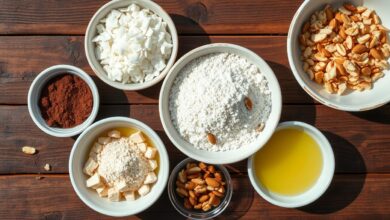Keto 101: The Ultimate Beginner’s Guide to Mastering the Ketogenic Diet

The Ultimate Keto Crusade: Your Complete Guide to the Ketogenic Diet 🥑🥩🧀
Welcome, health warriors and curious carb-cutters! 👋 If you’ve been hearing the buzz about the ketogenic diet and wondering what all the fuss is about, you’ve come to the right place. Buckle up as we embark on a journey through the land of high fat and low carbs. This is your one-stop guide to understanding, starting, and mastering the keto lifestyle.
What is the Ketogenic Diet? 🤔
The ketogenic diet, or “keto” for short, is a high-fat, moderate-protein, and very low-carbohydrate diet. It’s designed to shift your body’s primary fuel source from glucose (carbs) to ketones (fat). This metabolic state is called ketosis, and it’s the holy grail of the keto diet.
The Macronutrient Breakdown:
- Fat: 70-80% of calories
- Protein: 20-25% of calories
- Carbohydrates: 5-10% of calories (usually 20-50 grams per day)
The Science Behind Keto 🧪
When you drastically reduce your carb intake, your body runs out of its preferred fuel source – glucose. After a few days, it starts breaking down fat for energy, producing ketones in the process. This state of ketosis can lead to various potential benefits:
- Weight Loss: By burning fat for fuel, many people experience significant weight loss.
- Improved Mental Clarity: Some report enhanced focus and cognitive function.
- Stable Energy Levels: Without blood sugar spikes, energy tends to be more consistent.
- Reduced Inflammation: May help with certain inflammatory conditions.
- Better Blood Sugar Control: Can be beneficial for those with type 2 diabetes (under medical supervision).
Getting Started: Your Keto Kickoff 🚀
- Calculate Your Macros
Use an online keto calculator to determine your ideal fat, protein, and carb intake based on your age, height, weight, and activity level. - Clean Out Your Pantry
Bid farewell to high-carb foods like grains, sugars, most fruits, and starchy vegetables. Stock up on keto-friendly alternatives. - Plan Your Meals
Preparation is key! Plan your meals to ensure you’re hitting your macros and staying within your carb limit. - Stay Hydrated
Drink plenty of water and consider adding electrolytes, as the initial stages of keto can cause fluid loss. - Track Your Food
Use a food tracking app to monitor your macros, at least in the beginning, until you get a feel for portion sizes and carb content.
The Keto Food Pyramid: What to Eat 🍽️
Base Tier (Eat Liberally):
- Healthy Fats: Avocado, olive oil, coconut oil, butter, ghee
- Low-Carb Vegetables: Spinach, kale, broccoli, cauliflower, zucchini
- High-Quality Proteins: Eggs, fatty fish, meat, poultry
Middle Tier (Eat Moderately):
- Nuts and Seeds: Almonds, walnuts, chia seeds, flaxseeds
- Berries: Strawberries, raspberries, blackberries (in small amounts)
- Full-Fat Dairy: Cheese, heavy cream, Greek yogurt
Top Tier (Eat Sparingly):
- Low-Carb Fruits: Avocado, olives, coconut
- Keto-Friendly Sweeteners: Stevia, erythritol, monk fruit
Foods to Avoid:
- Grains and Starches: Wheat, rice, pasta, cereal
- Sugar: Candy, soda, fruit juice, most fruits
- Starchy Vegetables: Potatoes, corn, peas
- Legumes: Beans, lentils, chickpeas
Navigating the Keto Flu 🤒
As your body adapts to burning fat for fuel, you might experience the “keto flu” – a collection of symptoms like fatigue, headache, and irritability. Don’t worry, it’s temporary! Combat it by:
- Staying hydrated
- Increasing your salt intake
- Getting plenty of rest
- Ensuring you’re eating enough fat
Keto Hacks for Success 🔑
- Meal Prep: Prepare keto-friendly meals in advance to avoid temptation.
- Find Keto Substitutes: Zucchini noodles, cauliflower rice, and almond flour can replace high-carb favorites.
- Intermittent Fasting: Many find combining keto with IF boosts results.
- Exercise: Regular physical activity can enhance ketosis and overall health.
- Join a Community: Connect with other keto enthusiasts for support and recipe ideas.
Potential Pitfalls and How to Avoid Them ⚠️
- Not Eating Enough Fat: Don’t fear fat! It’s your main energy source on keto.
- Overeating Protein: Too much protein can be converted to glucose, potentially kicking you out of ketosis.
- Hidden Carbs: Be vigilant about reading labels and tracking all food intake.
- Neglecting Vegetables: Low-carb veggies are crucial for fiber and micronutrients.
- Dehydration: Keto has a diuretic effect, so stay hydrated!
Measuring Ketosis: Tools of the Trade 📏
- Urine Strips: Affordable but less accurate as you become fat-adapted.
- Blood Ketone Meter: Most accurate but requires finger pricks.
- Breath Analyzer: Non-invasive but can be less reliable.
Remember, the depth of ketosis doesn’t always correlate with results. Focus on how you feel and your progress towards your goals.
Is Keto Right for You? 🤷♂️🤷♀️
While many people thrive on a ketogenic diet, it’s not for everyone. Consult with a healthcare professional before starting, especially if you have any pre-existing health conditions. It’s particularly important for those with diabetes, kidney disease, or pregnant women to seek medical advice.
The Bottom Line 🎬
The ketogenic diet can be a powerful tool for weight loss and health improvement when done correctly. It requires dedication, planning, and a willingness to drastically change your eating habits. But for many, the results are worth the effort.
Remember, the best diet is one you can stick to long-term. If keto aligns with your lifestyle and health goals, it might just be the key to unlocking your best self!
Are you ready to embark on your keto journey? Or perhaps you’re a seasoned keto pro with tips to share? Drop your thoughts, questions, and keto victories in the comments below! Let’s keep the keto conversation sizzling! 🔥🥓🥑




